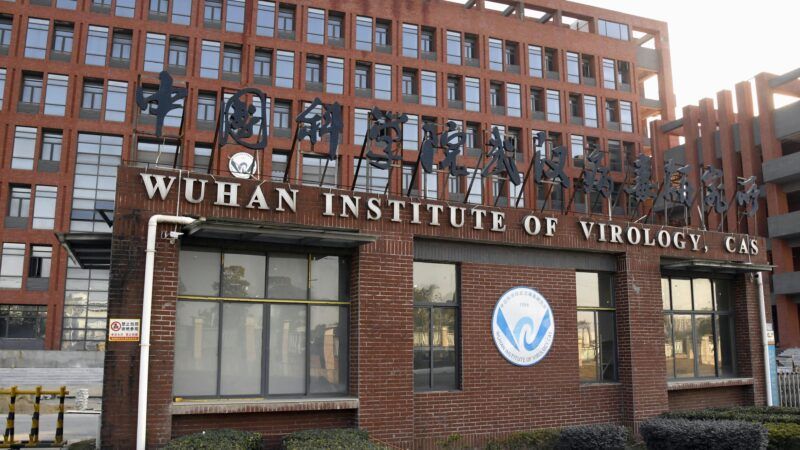Chinese Officials Are Obscuring the Truth About COVID-19
We don't know if COVID-19 escaped from a lab or not. The Chinese government apparently wants to keep it that way.

American politicians "all fall eerily silent when inquired about the reason why Fort Detrick was closed right before the pandemic outbreak," asserted an op-ed titled "Watch out for the US-made viruses," which was published in China Daily on June 24. The piece goes on to hint that evidence points to COVID-19 escaping from that U.S. military research facility, which would mean the virus began spreading several months earlier in the U.S. rather than in Wuhan. In fact, Fort Detrick was shut down in August 2019 for several months due to safety concerns.
"Once again we urge the US to open up Fort Detrick as soon as possible, grant necessary access to international experts to learn relevant information, and publish research conducted in its over 200 biological labs all over the world," urged Chinese Foreign Affairs Ministry spokesperson Zhao Lijian at a June 24 press conference. Chinese officials continue to insinuate that perhaps COVID-19 was introduced into Wuhan by American soldiers during the Military World Games in October 2019. Conversely, some members of Congress are now asking the Biden administration to investigate whether the games were a "superspreader event" during which U.S. military athletes became infected by the novel coronavirus.
As it happens, Jesse Bloom, a virologist at the Fred Hutchinson Cancer Research Center, reported earlier this week that he had located genetic sequences of COVID-19 that had been deleted from an open-access sequence database at the request of Chinese researchers. Bloom was one of the chief organizers of an open letter published last month in Science arguing that "we must take hypotheses about both natural and laboratory spillovers seriously until we have sufficient data. A proper investigation should be transparent, objective, data-driven, inclusive of broad expertise, subject to independent oversight, and responsibly managed to minimize the impact of conflicts of interest."
Now Bloom reports in a non-peer-reviewed preprint that the deleted sequences differ from those identified at the Huanan Seafood Wholesale Market where the outbreak was initially thought to have originated. His analysis of these sequences suggests that COVID-19 could have been circulating in Wuhan well before Chinese researchers reported identifying it on December 30, 2019.
Interestingly, a study published earlier this week in the journal PLOS Pathogens by a team of University of Kent bioscientists analyzes the early spread of the virus outside of China. Working backward, they calculate that COVID-19 emerged in China in early October to mid-November, and by January, had spread globally. The researchers assume the virus originated in animals and spilled over into humans.
Over at The New York Times, University of North Carolina information scientist Zeynep Tufekci has just published a terrific analysis and timeline of what we do and do not know about the origins of COVID-19. "What we already know is troubling," she concludes. Among other things, Tufekci reports that several of the researchers who were co-authors of a February 2020 open letter in The Lancet that "strongly condemn[ed] conspiracy theories suggesting that COVID-19 does not have a natural origin" are rethinking the lab leak theory.
As it demands of the United States, China should immediately "grant necessary access to international experts to learn relevant information" from the Wuhan Institute of Virology. But maybe Chinese officials and researchers do really have something to hide.


Show Comments (149)